Faint Starlight In Hubble Images Reveals Distribution Of Dark Matter
Faint starlight in Hubble images reveals distribution of dark matter
Astronomers using data from the NASA/ESA Hubble Space Telescope have employed a revolutionary method to detect dark matter in galaxy clusters. The method allows astronomers to “see” the distribution of dark matter more accurately than any other method used to date and it could possibly be used to explore the ultimate nature of dark matter. The results were published in the journal Monthly Notices of the Royal Astronomical Society.

In recent decades astronomers have tried to understand the true nature of the mysterious substance that makes up most of the matter in the Universe – dark matter – and to map its distribution in the Universe. Now two astronomers from Australia and Spain have used data from the Frontier Fields programme of the NASA/ESA Hubble Space Telescope to accurately study the distribution of dark matter.
Keep reading
More Posts from Primordialbitch and Others
Hubble fortuitously discovers a new galaxy in the cosmic neighborhood
Astronomers using the NASA/ESA Hubble Space Telescope to study some of the oldest and faintest stars in the globular cluster NGC 6752 have made an unexpected finding. They discovered a dwarf galaxy in our cosmic backyard, only 30 million light-years away. The finding is reported in the journal Monthly Notices of the Royal Astronomical Society: Letters.

An international team of astronomers recently used the NASA/ESA Hubble Space Telescope to study white dwarf stars within the globular cluster NGC 6752. The aim of their observations was to use these stars to measure the age of the globular cluster, but in the process they made an unexpected discovery.
Keep reading

Powehi means “the adorned fathomless dark creation” or “embellished dark source of unending creation” and comes from the Kumulipo, an 18th century Hawaiian creation chant. Po is a profound dark source of unending creation, while wehi, meaning honoured with embellishments, is one of the chant’s descriptions of po, the newspaper reported.
What's a neutron star? I read about them in Bill Bryson's book, but I couldn't figure out why a neutron start would happen in the first place?
When massive stars collapse, the core of the star gets compressed extremely tightly by the force of its own gravity. As the core collapses, the electrons and protons in the core get closer and closer together. Eventually, the core gets so dense that the electrons and protons are forced together, combining into neutrons. The entire core becomes essentially a solid ball of neutrons, as dense as an atomic nuclei. The outer layers of the star, which are also rushing in towards the core, bounce off of this rock-hard layer of neutrons and whiz off into space, creating a supernova and leaving behind a neutron star at the center. And all of this happens in less than a second. Pretty wild. To summarize: neutron stars are giant balls of neutrons that resulted when a stellar core collapsed and became so dense the protons and electrons combined into neutrons.
Side note: Robert L. Forward wrote a really interesting novel called Dragon’s Egg, which was about intelligent life on a neutron star! It’s quite an interesting read, and you learn a whole lot about neutron stars since the author has a Ph.D in physics. If you want a copy, you can find it here; you won’t find it at a bookstore because it’s out of print, but you can find a used copy online (I linked to one). Let me know if you have any other questions, I’m happy to answer them!
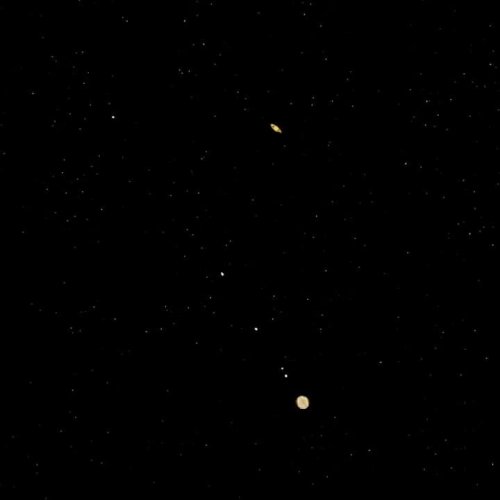
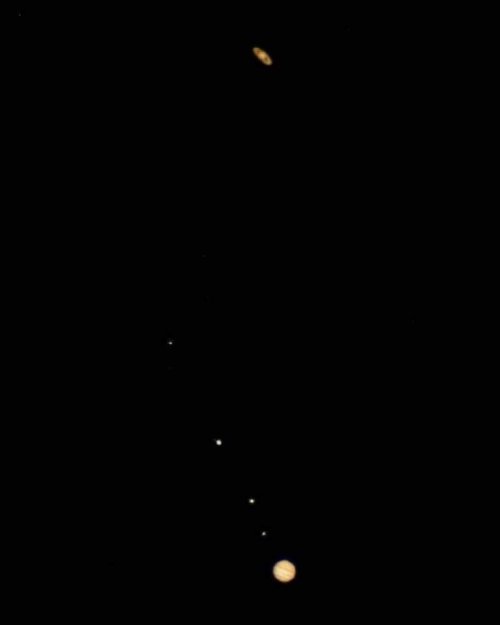
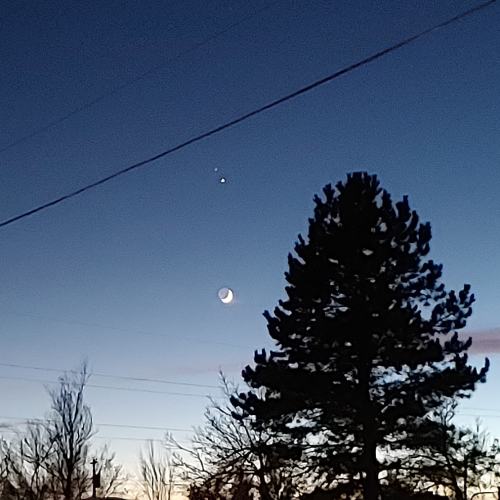
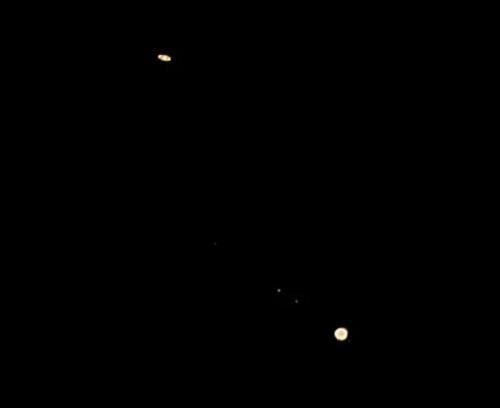
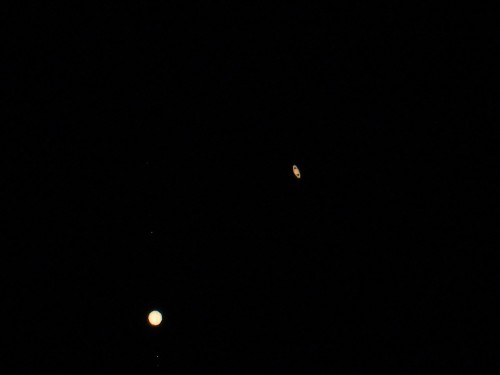
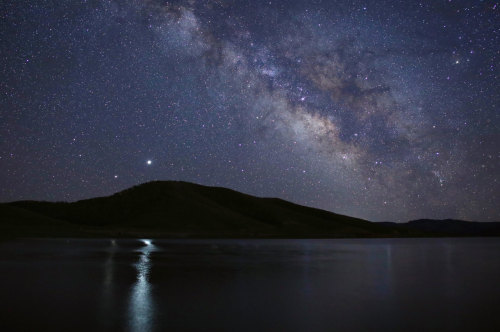
The Great Conjunction: Jupiter and Saturn 🌌.

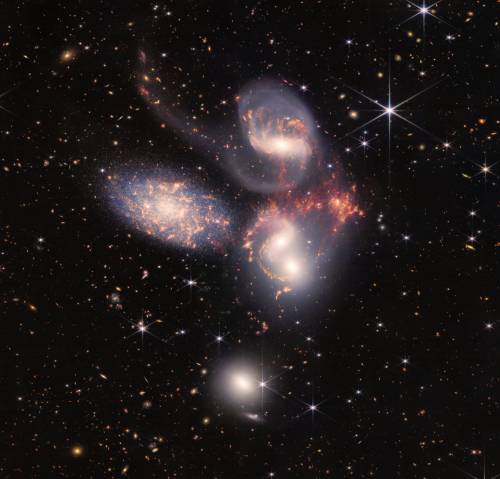
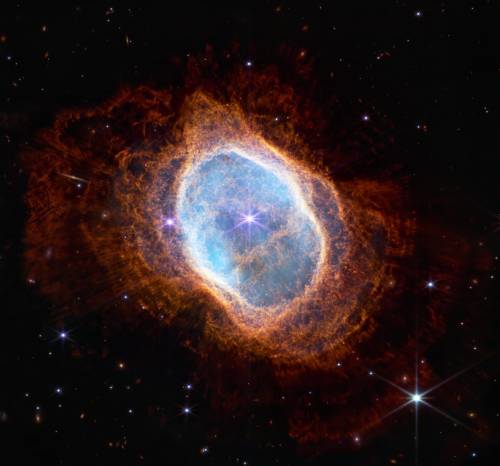
NASA’s Webb Space Telescope Reveals Astounding, Unprecedented Views of the Universe

shit man this got me emotional






Ancient Bronze Age city reemerges from Iraq river after extreme drought

When an extreme drought caused a 3,400-year-old city to reemerge from a reservoir on the Tigris River in northern Iraq, archaeologists raced to excavate it before the water returned.
The Bronze Age city, at an archaeological site called Kemune, is a relic of the Mittani Empire (also spelled Mitanni Empire), an ancient kingdom that ruled parts of northern Mesopotamia from around 1500 B.C. to 1350 B.C. Researchers have long known of the remains of the city, but they can only investigate them during droughts.
Archaeologists partly excavated Kemune in 2018 and discovered a lost palace with 22-foot-high (7 meters) walls and chambers decorated in painted murals, Live Science previously reported. This time, researchers mapped most of the city, including an industrial complex and a multistory storage facility that likely held goods from all over the region, according to a statement released by the University of Tübingen in Germany. Read more.
Here’s one good thing to come out of 2020:
Paleontologists completed a life-sized replica of Sue, the most complete T. Rex ever found.

And she is freaking GORGEOUS!
As I read more about this beauty, I found out some new details regarding things I thought I previously knew about the beast that was Tyrannosaurus Rex, and I’m going to share them with you.
First, and most obvious, her size:

This is nothing new, we all figured T. Rex was big, but I for one never stopped to consider exactly how big it was. Nobody ever really knows what to imagine when they read about something the size of a whale that walked around and ate everything it could kill.
Speaking of eating things, I just want to remind you all that T. Rex had–by miles–the strongest bite of any terrestrial animal living or dead, somewhere around six and a half tons of force. That’s over six times greater than the current estimate of what Allosaurus was capable of, and three times what was delivered by the highest measured reading of the living title holder–the estuarine crocodile. It didn’t have to waste time swinging its head open-mouthed like Saurophaganax for a little extra oomph, or grow fancy serrated teeth like Carcharodontosaurus to cut pieces out of its prey. It opted for the simplest approach: get its mouth around something and crush it to death; imagine the full weight of an elephant on whatever was between this thing’s jaws.
“How did it find something to eat?” I hear you asking. “It can’t see something if it doesn’t move, right?”
Listen, I love Jurassic Park too, but that’s a big crock of shit.

Notice how both her eyes face forward. That gives her binocular vision (the ability to focus both eyes on one target, like you and I). More importantly it means she has impeccable depth perception due to overlapping fields of vision from each, large, eyeball. Researchers agree that T. Rex not only had incredible vision, but that it was probably better than most modern animals–including eagles, hawks, and owls–and that she could likely spot something three and a half miles away. If something that big can see that well, it doesn’t matter if you move or not, she’d be able to tell if it was an animal trying to hide or a piece of vegetation. So pray she isn’t hungry if she lays eyes on you. And even if by some miracle she didn’t see you, she’d still smell you.
If she decided you looked tasty, you probably wouldn’t hear her coming as much as you’d feel her. Modern science indicates that T. Rex didn’t roar like in Jurassic Park, but rather bellowed or maybe even hissed like crocodilians. If she were on to you, you’d most likely feel this sense of unease creep up your spine as a low-pitched rumble in the air permeated through you. You wouldn’t know what it was or where it was coming from until you hear her footfalls. By then it’s too late–you could try to run but she’d probably catch you. There’s plenty on YouTube that reconstructs what T. Rex may have sounded like, and it’s legitimately haunting.
To wrap all of this up, the one bit of good that came out of the cursed year that is 2020 is that this wonderful child of science and art came into the world, and reaffirmed my respect and admiration for the eight ton slab of muscle and teeth that is this magnificent creature.
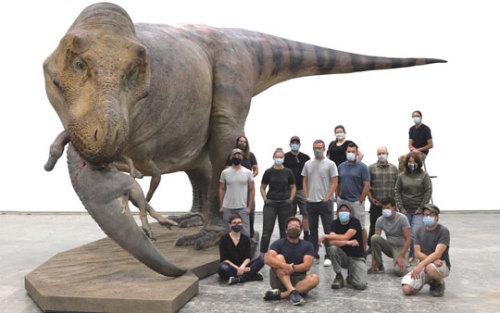
…and it is nothing if not magnificent.

Motion is Curved and All Curvature is Spiral" - Walter Russell
-
 primordialbitch reblogged this · 5 years ago
primordialbitch reblogged this · 5 years ago -
 adiposeclot liked this · 5 years ago
adiposeclot liked this · 5 years ago -
 pabono liked this · 6 years ago
pabono liked this · 6 years ago -
 cmonboard liked this · 6 years ago
cmonboard liked this · 6 years ago -
 feralfemmedaddy liked this · 6 years ago
feralfemmedaddy liked this · 6 years ago -
 phantomfacestuff liked this · 6 years ago
phantomfacestuff liked this · 6 years ago -
 cpknightly1 liked this · 6 years ago
cpknightly1 liked this · 6 years ago -
 head-thrown-backandbody-on-fire liked this · 6 years ago
head-thrown-backandbody-on-fire liked this · 6 years ago -
 zathrasan liked this · 6 years ago
zathrasan liked this · 6 years ago -
 biowhatnow reblogged this · 6 years ago
biowhatnow reblogged this · 6 years ago -
 bluevandel8871 liked this · 6 years ago
bluevandel8871 liked this · 6 years ago -
 panzerneck liked this · 6 years ago
panzerneck liked this · 6 years ago -
 bookwormdan liked this · 6 years ago
bookwormdan liked this · 6 years ago -
 mqddog reblogged this · 6 years ago
mqddog reblogged this · 6 years ago -
 norawolf liked this · 6 years ago
norawolf liked this · 6 years ago -
 turojor8 liked this · 6 years ago
turojor8 liked this · 6 years ago -
 volkaner reblogged this · 6 years ago
volkaner reblogged this · 6 years ago -
 scifigeneration reblogged this · 6 years ago
scifigeneration reblogged this · 6 years ago
